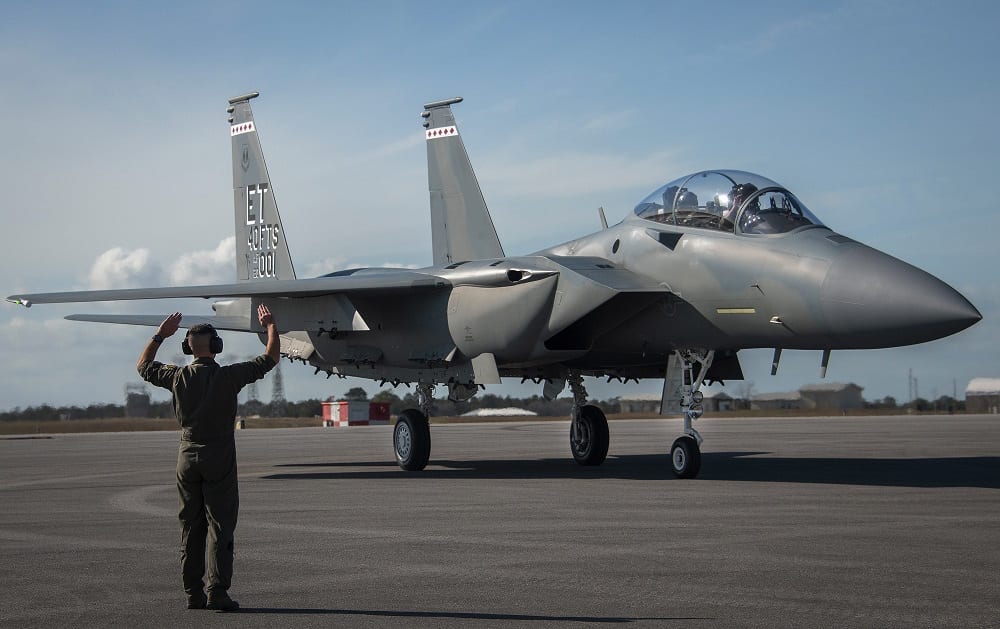A U.S. Air Force C-17 Globemaster III cargo plane by Boeing recently test flew the Silicon Valley-based SandboxAQ‘s Magnetic Navigation (MagNav) system–leveraging quantum magnetometers and artificial intelligence–as the aircraft’s prime alternative to GPS, Joint Base Charleston, S.C., said last week.
“Although the technology had been demonstrated before, the groundbreaking event was the first instance where MagNav was the primary method of navigation in flight,” the base said. “This world-first demonstration is a huge step toward developing Assured Position, Navigation, and Timing [PNT], which will be crucial in a near-peer fight.”
Eric Schmidt, the former CEO of Google and executive chairman of its parent, Alphabet, Inc., heads SandboxAQ’s board of directors.
In January last year, SandboxAQ received a Direct-to-Phase-II Small Business Innovation Research contract, worth up to $1.25 million, from the Air Force’s AFWERX innovation arm to research quantum navigation.
SandboxAQ said on Aug. 16 that the Air Force has extended last year’s SBIR contract “to explore additional configurations of the core AQNav architecture, including a pod-based attachment, for deployment on a wider range of aircraft platforms, including unmanned aerial systems.”
Joint Base Charleston said last week that SandboxAQ “initially ran flight testing” from Travis AFB, Calif., and then collaborated with the base’s “Palmetto Spark Lab at Mobility Guardian 2023, where SandboxAQ was gathering in-flight magnetic data to train their AI model.”
The recent C-17 demonstration “was flown by the 16th Airlift Squadron, with individuals from SandboxAQ, Palmetto Spark, National Geospatial Intelligence Agency (NGA), and AFWERX,” Joint Base Charleston said last week. “Of the five segments flown, three reached RNP1.0 performance, meaning the aircraft was able to calculate its position to within one nautical mile. The AQNav user interface was generating true headings to the next waypoint in real time, allowing the pilots to accurately navigate the aircraft.
“To date, SandboxAQ’s AQNav technology has logged more than 200 flight hours and more than 40 sorties across multiple regions on four different aircraft types, ranging in size from single-engine planes to large military transport aircraft,” the company said on Aug. 16.
While DoD’s Positioning, Navigation and Timing (PNT) Oversight Council has focused on moving ahead on the anti-jamming, anti-spoofing, encrypted GPS M-code signal, the Pentagon should prioritize GPS alternatives, the Government Accountability Office (GAO) has said.
“Should GPS be unavailable for any reason – terrain, weather, technical failure or active adversary action – the loss of the system would be deleterious to the success of any operation,” Air Force Materiel Command said earlier this year. “This is particularly true for small unmanned systems, which typically rely on GPS as their only navigation solution due to Size, Weight, Power, and Cost (SWAP-C) constraints and do not have the luxury of onboard human operators as contingency.”
A version of this story originally appeared in affiliate publication Defense Daily.
The post C-17 Flies with Alternative GPS Magnetic Navigation as Prime PNT System appeared first on Avionics International.
—————
Boost Internet Speed–
Free Business Hosting–
Free Email Account–
Dropcatch–
Free Secure Email–
Secure Email–
Cheap VOIP Calls–
Free Hosting–
Boost Inflight Wifi–
Premium Domains–
Free Domains










